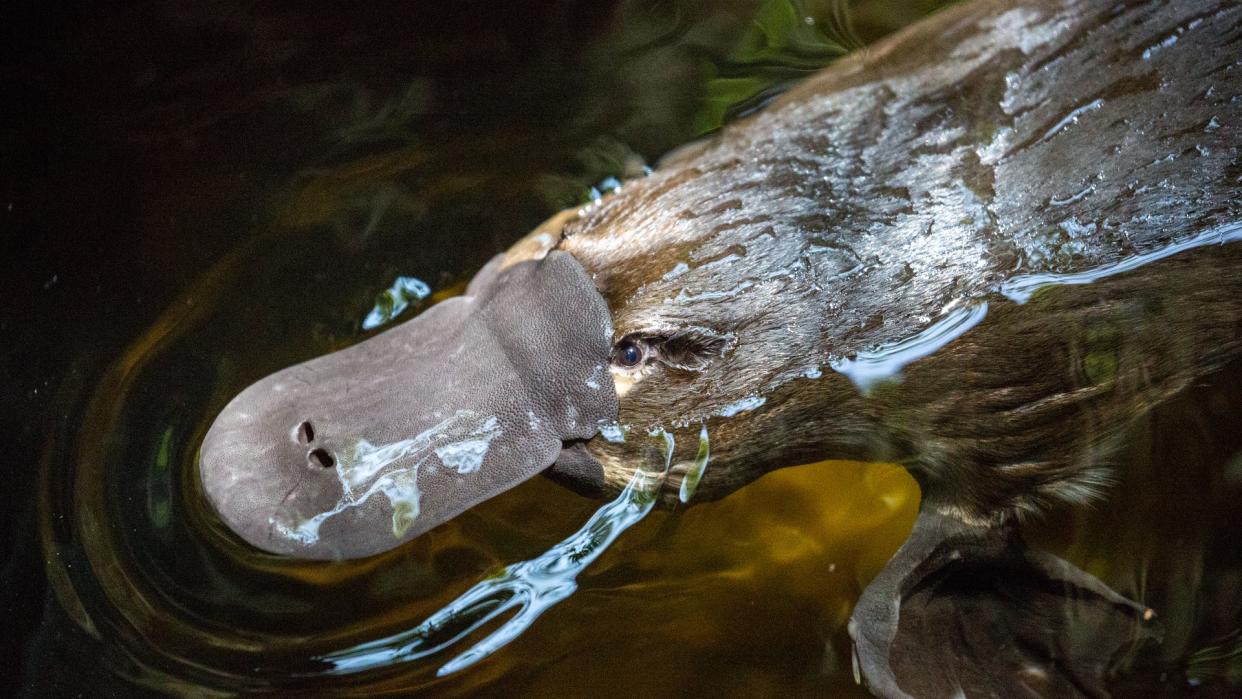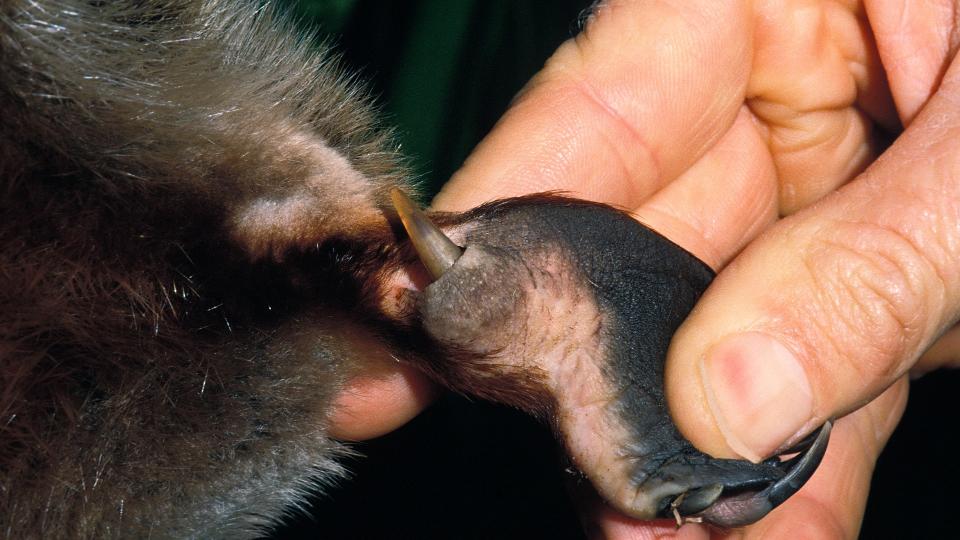Platypus stabs woman with its venomous spurs in odd case


A platypus wandering by a roadside in Australia stabbed a woman with its venomous spurs when she attempted to lift it from a gutter.
Jenny Forward was driving home in Tasmania when she spotted what she thought was an injured platypus on the roadside. She attempted to intervene, but when she picked up the semi-aquatic critter, she felt two spikes dig into either side of her right hand. These spikes released venom into the wounds, leaving her in agony, ABC News reported.
"It was as though someone had stabbed [my hand] with a knife," Forward told the news network. "The pain was excruciating … definitely worse than childbirth," she said.
After quickly removing the platypus' spurs from her flesh, Forward drove to the hospital, where doctors gave her antibiotics and pain relief. They then conducted emergency surgery to clean and stitch up her wounds. A week after treatment, Forward was still in pain and had red swelling on her hand, ABC News reported.
Platypuses (Ornithorhynchus anatinus) are among the weirdest mammals in the world, looking like a strange cross between a beaver, an otter and a duck. They live both on land and in water and are found only in Australia. Male platypuses have hollow spurs on their back legs linked to glands that produce a clear, sticky venom. The animals' venom production peaks during their mating season, which normally begins towards the end of winter, so scientists think it's a weapon that's normally used to compete with other males for access to females, according to the Australian Platypus Conservancy (APC).
Platypus venom is not life-threatening to humans or other platypuses, but it can cause intense pain and swelling in the part of the body where someone is spurred. Studies on platypus venom are limited, but research suggests it contains a mixture of small proteins, such as Heptapeptide 1, which targets the nervous system, and an enzyme called amine oxidase that may trigger cell death and tissue swelling.

There is no approved antivenom, but nerve-blocking drugs, such as bupivacaine, can be used to minimize the pain from a platypus spurring you, the APC said in a Facebook post addressing the woman's recent stabbing.
People may assume that if they see a platypus on land or near a drain that they are in danger when this may not always be the case, Greg Irons, director of the Bonorong Wildlife Sanctuary in Brighton, Australia, told ABC News. "Platypus will travel fairly long distances on land and they also use drains as highways," he said.
RELATED STORIES
—New species of bacteria discovered after man is bitten by stray cat
—Move over, Viagra — this spider's boner-inducing venom could treat people let down by the blue pill
—In rare case, man develops painful deep vein blood clots following brown recluse spider bite
If someone sees a platypus in the wild and they're unsure of whether it needs help, Irons recommended taking a video or photo of the animal and sharing it with a wildlife rescuer. If it looks obviously injured, then you could also place a tub over it to protect it while you wait for help, he said.
On Facebook, the APC noted that male platypuses are rarely aggressive if handled correctly. Rather than placing a hand under the animal, trained animal caretakers would lift the platypus from the middle or end of its tail to avoid the spurs.

